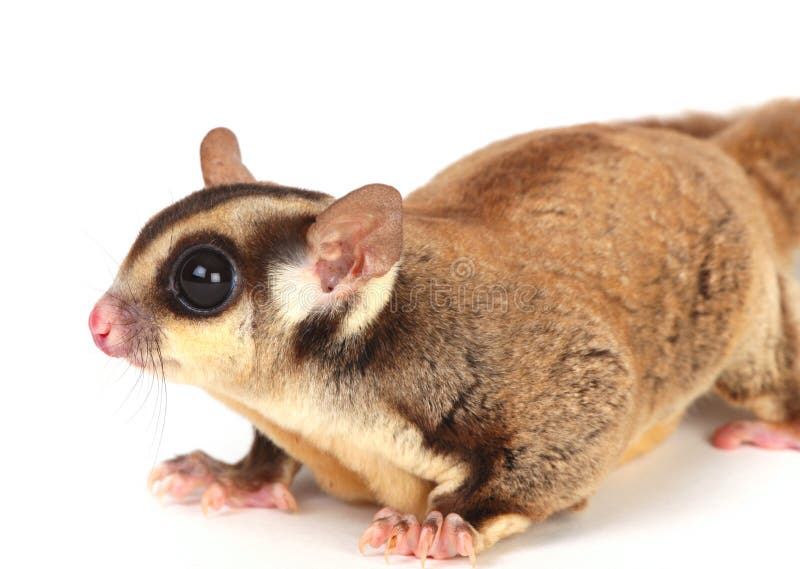

The earliest Australian sugar glider fossils were found in a cave in Victoria and are dated to 15 000 years ago, at the time of the Pleistocene epoch. Sugar gliders are found throughout the northern and eastern parts of mainland Australia, Tasmania, New Guinea and several associated isles, the Bismarck Archipelago, Louisiade Archipelago, and certain isles of Indonesia, Halmahera Islands of the North Moluccas. Lifespan in the wild is up to 9 years is typically up to 12 years in captivity, and the maximum reported lifespan is 17.8 years. The membrane is supported by well developed tibiocarpalis, humerodorsalis and tibioabdominalis muscles, and its movement is controlled by these supporting muscles in conjunction with trunk, limb and tail movement. When the legs are stretched out, this membrane allows the sugar glider to glide a considerable distance. The gliding membrane extends from the outside of the fifth digit of each forefoot to the first digit of each hindfoot. The fourth digit of the fore foot is sharp and elongated, aiding in extraction of insects under the bark of trees. The second and third digits of the hind foot are partially syndactylous, forming a grooming comb. These opposable toes are clawless, and bend in a way that they can touch all the other digits, like a human thumb, allowing the sugar glider to firmly grasp branches. The sugar glider has five digits on each foot, with an opposable toe on each hind foot. The eyes of the sugar glider are set far apart, allowing them to triangulate the distance between launch and landing location during gliding. It is nocturnal, and its large eyes help it to see at night, and its ears swivel to help locate prey in the dark. Females also have a paracloacal scent gland, as well as a scent gland in the pouch, but do not have scent glands on the chest or forehead. Scent glands on the head and chest of males appear as bald spots. Males have four scent glands, located on the forehead, chest, and two paracloacal that are used for marking of group members and territory. Its belly, throat, and chest are cream in colour. A black stripe is seen from its nose to midway on its back. The sugar glider has a thick, soft fur coat that is usually blue-grey although some have been known to be yellow, tan or albinoDomestic in-breeding of recessive genetic phenotype defects can produce other colour variations not found in nature, such as an all-white leucistic heterozygote. Sexual dimorphism has likely evolved due to increased mate competition arising through social group structure and is more pronounced in regions of higher latitude, where mate competition is greater due to increased food availability. The sugar glider is a sexually dimorphic species, with males typically larger than females. Heart rate range is 200-300 beats per minutes, and respiration rate is 16-40 breaths per minute. The length from the nose to the tip of the tail is about 24 to 30 cm, and males and females weigh 140 grams and 115 grams respectively.

The sugar glider has a squirrel-like body with a long, partially prehensile tail.


 0 kommentar(er)
0 kommentar(er)
